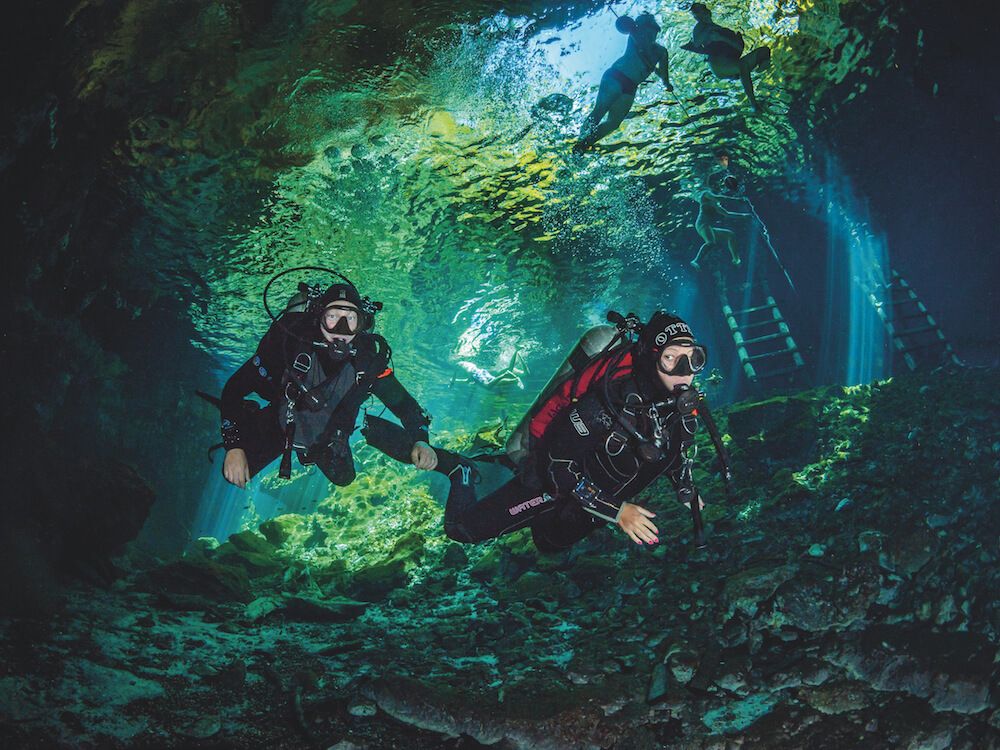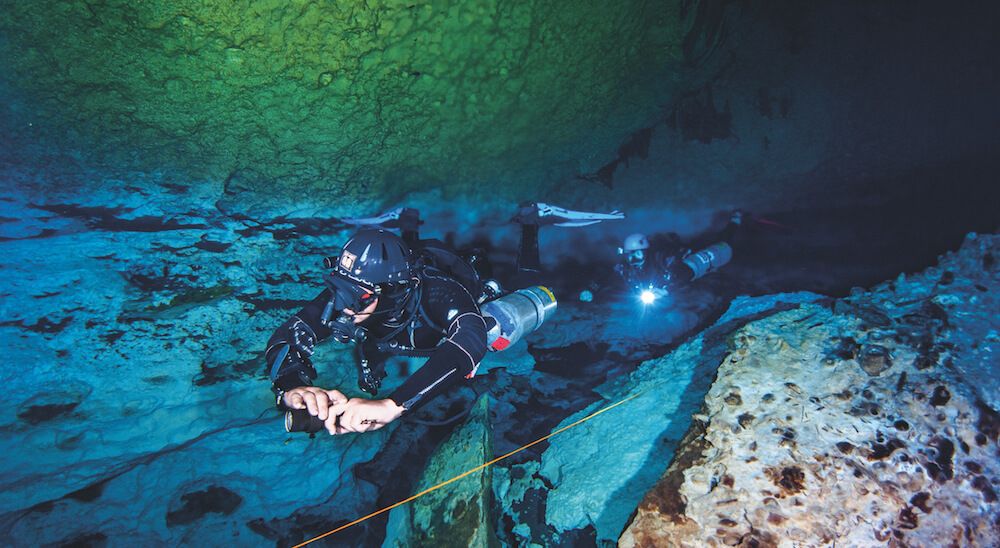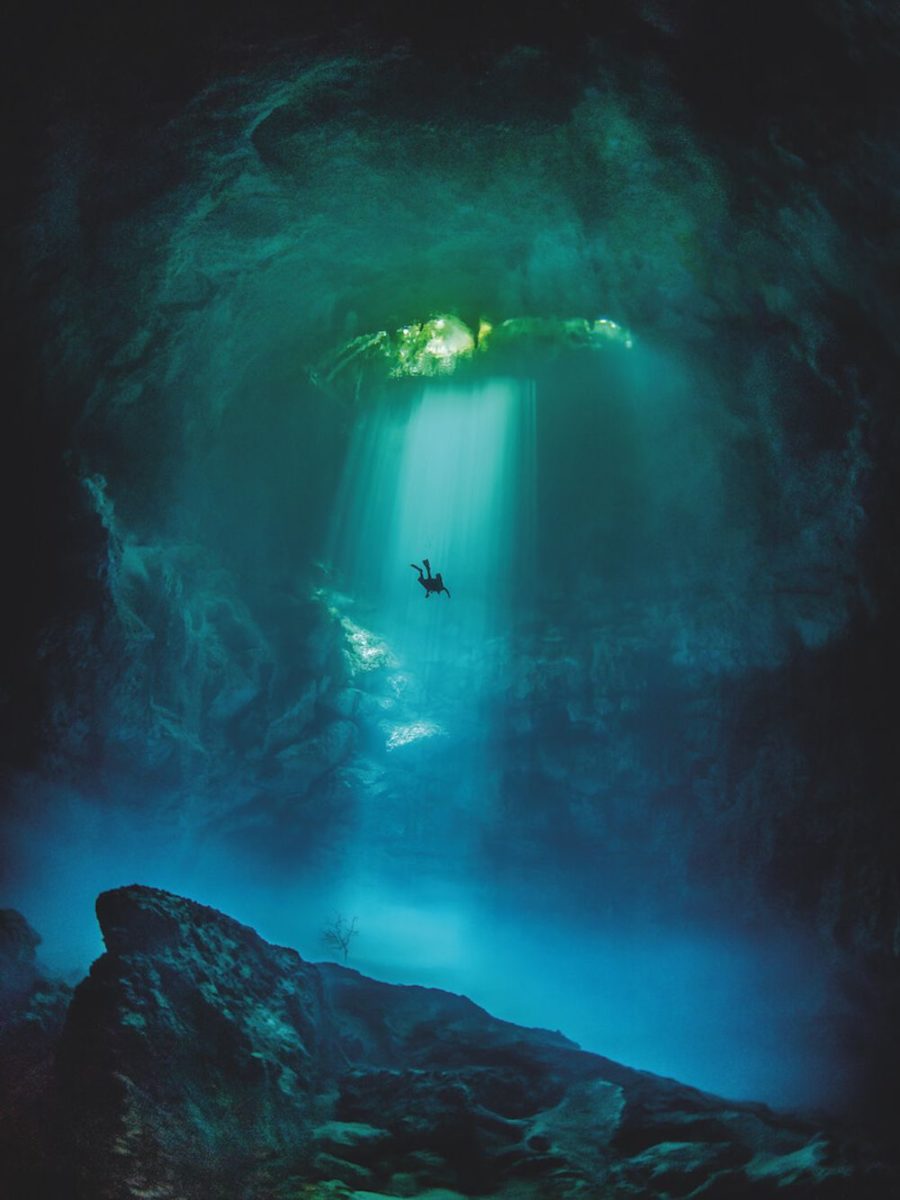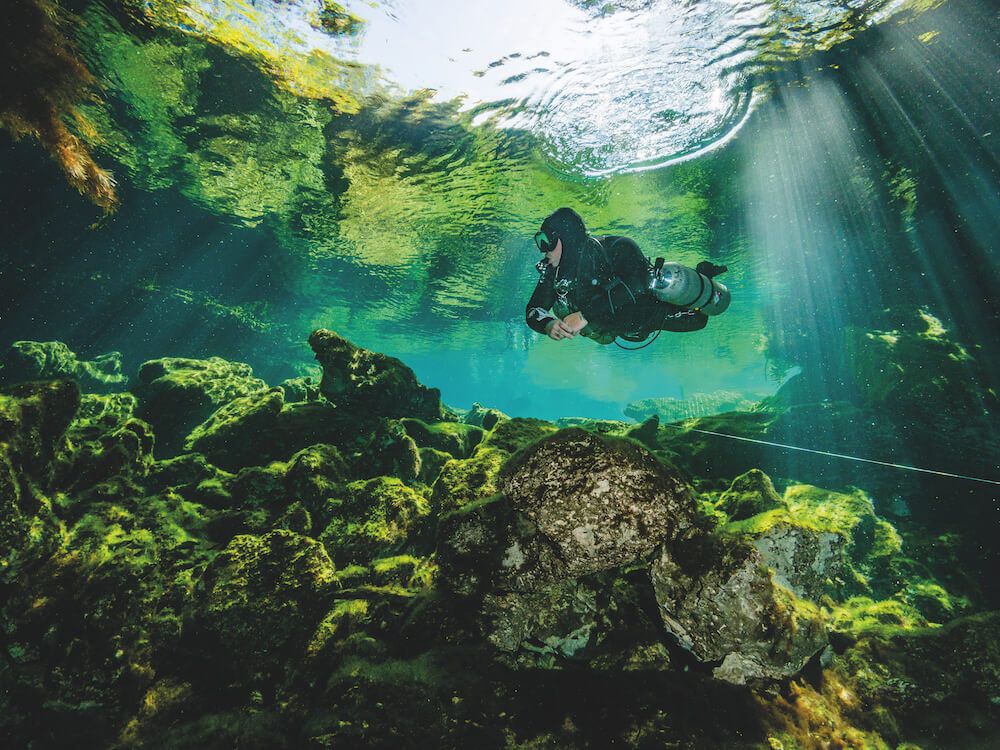
For photographer Tom St George, scuba diving Mexico’s cenotes is a passion. Here he shares his guidelines for how to make the adventure safe, exhilarating and sustainable
An open-water diving qualification is all you need to experience the wonder of cavern diving in the cenotes of the Riviera Maya in Mexico.
There are more than a dozen cenotes (pronounced se-NO-tays) commonly dived. While each is unique, they all share moderate temperatures, offer year-round diving and the promise of adventure.

Most of the cenotes are found along the now busy highway between Playa del Carmen and Tulum. They include the underwater garden of Cenote Carwash, the statuesque decorations of Dos Ojos and the amazing light show of Tajma Ha. With an advanced certification, you can also enjoy the deeper dive sites of the majestic Cenote El Pit and the haunting Cenote Angelita.
The Yucatán Peninsula was once a shallow reef and is now a porous limestone shelf covered with forest and wildlife. There are no rivers here. Instead, the rainwater flows underground through a network of submerged cave systems, eventually reaching the sea. Mexico has nine out of the ten largest cave systems in the world.

The cenotesare the entrances to these systems and provide the only access to freshwater in the area. They were hugely significant to the Maya civilisation and are still important to the population of Maya people living in the state of Quintana Roo today.
The name cenote is a Spanish corruption of the Maya word d’zonot, which means a place with access to water. The Maya consider the cenotes sacred and believe them to be entrances to the Mayan underworld, Xibalba, where gods live and spirits reside after death.
A cenote is a natural sinkhole created when the ceiling of an underground cave has collapsed. Some cenotes are vertical, water-filled shafts, others are shallow entrances created by just a partial collapse. These cave systems were formed when the sea level was much lower than it is today. Rainwater is slightly acidic, and so it slowly eroded the limestone as it percolated through the bedrock and carved out the caves. As water dripped from the ceilings of these caves it deposited some of the dissolved limestone to form the stalagmites and stalactites we can see today. As the water levels once again rose the caves became flooded.

In diving terms, a cavern is defined as the entrance area of an underwater cave where the daylight is still visible and is no more than 60m from open water. As cavern diving is conducted in an overhead environment, it is considered a specialised form of diving. While cavern diving certifications are available (these being the first step on the road to a full cave diving certification) they are not required if your diving is supervised by a qualified local cavern guide. Cavern guides are required to have at the minimum certifications of both divemaster and full cave diver.
While a recreational cavern tour is very different from a cave dive, it borrows heavily from protocols used for cave diving. The most important being that there should always be a continuous guideline that you can follow to reach open water safely. In the event of a light failure, team separation or loss of visibility, this line is your lifeline.


CENOTES RULES
- No touching (so no gloves)
- Stay on the guideline at all times
- No more than four divers per guide
- Each diver must have a dive light which should remain on for the entire dive
- Stay within the cavern zonewith daylight visible at all times
- Follow the rule of thirds: use a third of your gas in and a third of your gas out, leaving a third in reserve
- Always dive in passages wide enough for two divers to pass side by side, which allows divers to gas-share in an emergency.







